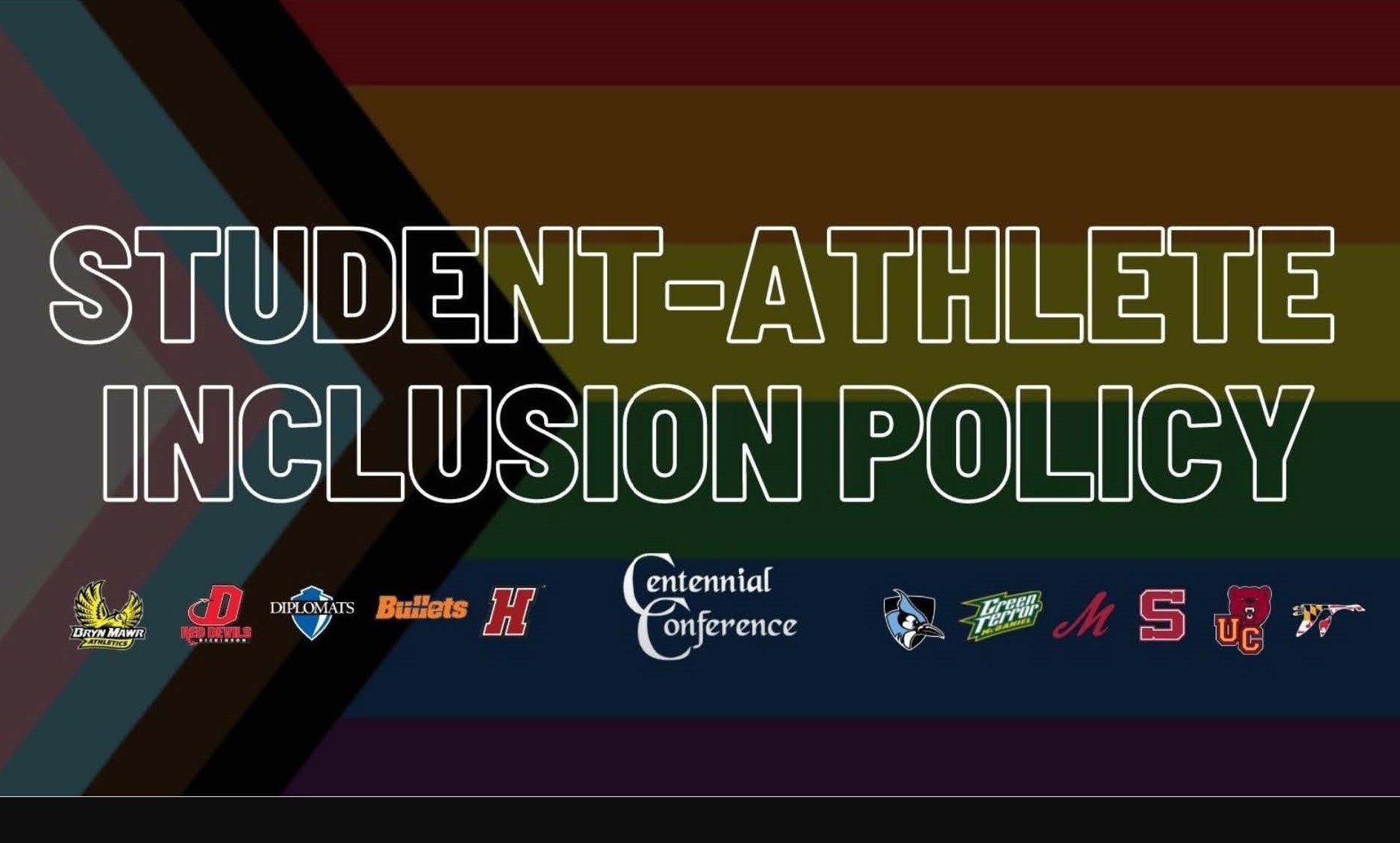Inclusion in sports for those who do not fall in the gender binary is something that has been a sensitive topic throughout history. Just two weeks ago, on Oct. 26, Texas governor Greg Abbott signed a bill into law banning transgender athletes from playing on the sports team that fits with the gender that they identify as. This makes Texas the tenth state to have such a law.
Over the summer, the Centennial Conference, in conjunction with advisors from various backgrounds, worked to create an updated Student-Athlete Inclusion Policy to foster spaces for transgender, non-binary and gender-fluid athletes to compete in school sports.
Amber Thomas, coordinator of sports administration for the Centennial Conference and the Athletics Diversity and Inclusion Designee noted, “We really wanted to create a policy that could [allow us to be] the most inclusive that we can. So, over the last couple of months, we’ve held forums for our presidents, athletic directors, our athletics diversity inclusion designees… our coaches and our SAAC [Student Athlete Advisory Committee]… to have conversations about what we wanted to see out of this policy.”
Thomas continued, “We’re not the first conference to create such an inclusion policy, but we do have pretty much the most up-to-date policy because we added modern terminology, best practices and also resources. The NCAA released their policy in 2011, so it’s definitely been a while since the policy was first established. We definitely wanted to come with a modern look on things. We also paired our policy with programming that included training for administrators, coaches and athletic staff with the non-profit organization called Athlete Ally.”
In creating the Student-Athlete Inclusion Policy, representatives from each of the eleven Centennial Conference schools were consulted to ensure that the policy reflected each school’s needs and values. Sarah Leavenworth, assistant director of athletics, head softball coach and the Muhlenberg representative for the Centennial Conference said, “I received updated copies of the document as it went through the various editing stages. There were two meetings to discuss the document for people at my level of involvement… It was very good to get it down on paper and put it out there so that student-athletes interested in participating at Muhlenberg would understand how they might be protected, accommodated and cared for all of those different things.” Surprisingly, according to Leavenworth, “There wasn’t a lot in the document that was created that Muhlenberg wasn’t already doing.”
Megan Patruno, associate director of athletics expanded on this. “I believe the Centennial Conference inclusion policy aligns with Muhlenberg College’s Transgender Student-Athlete Inclusion Policies as well as with the College’s general discrimination policies. Muhlenberg is committed to an inclusive educational environment and these policies support that commitment.”
Patruno continued saying, “Muhlenberg College also developed a Transgender Student-Athlete Inclusion Policy this summer and fall. Our policy includes elements from the Centennial Conference policy, but also from the NCAA’s policy that was instituted in 2011. We follow all NCAA rules and guidelines. We are developing a specific Student-Athlete Resource page on our athletics website. In that space, we will include our inclusion policy and other links to important information for our student-athletes. We hope to have this page up and running very soon.”
The updated Student-Athlete Inclusion Policy is broken down into a few sections: Inclusive Practices within the Conference, Education, Opposing Teams/Institutions, Definitions, Ensuring Full Participation for Trans and Non-Binary Student-Athletes and a statement on the Annual Review of the Student-Athlete Inclusion Policy. Most striking is the policy’s outlining of how non-cisgender athletes can compete on gendered teams. The policy states:
“A transgender male student-athlete who has received a medical exception for, and is being treated with, testosterone for purposes of NCAA competition may compete on a men’s team, but is no longer eligible to compete on a women’s team without changing that team status to a mixed team. A transgender female student-athlete being treated with testosterone suppression medication, or who has undergone surgical intervention to suppress testosterone production, for gender transition, may continue to compete on a men’s team but may not compete on a women’s team without changing it to a mixed team status until completing one calendar year of documented testosterone-suppression treatment. A student who identifies as gender fluid, genderqueer, non-binary, agender or another gender outside the gender binary not taking hormones may participate in sex-separated sports activities in accordance with the individual’s assigned birth sex.”
Unfortunately, this could be exclusionary towards students who don’t have access to such resources or who chose not to pursue surgical or hormonal options.
Additionally, the Centennial Conference supported protections for non-cisgender athletes against retaliations. As the policy reads:
“The Centennial Conference encourages its membership to create institutional policies and best practices for transgender-student athlete participation and inclusion. Centennial Conference members should have written policies to protect the rights of transgender and non-binary individuals and to ensure retaliation does not occur to any transgender or non-binary individual.”
When asked about whether there has been any pushback by colleges or affiliates of colleges on the new policy, Thomas replied, “No, all of our schools really play a huge part in creating this policy. So there really hasn’t been any pushback, each college president was very hands on with what this policy says. The athletic directors, coaches. I feel like everyone, I hope everyone, felt like they had a voice in this, and we all just want to be as inclusive as we can the most equitable when it comes to creating opportunities for student athletes.”
Thomas added, “We were super excited about the creation of this policy. We hope this will continue to create conversations around inclusion in sport.”






















